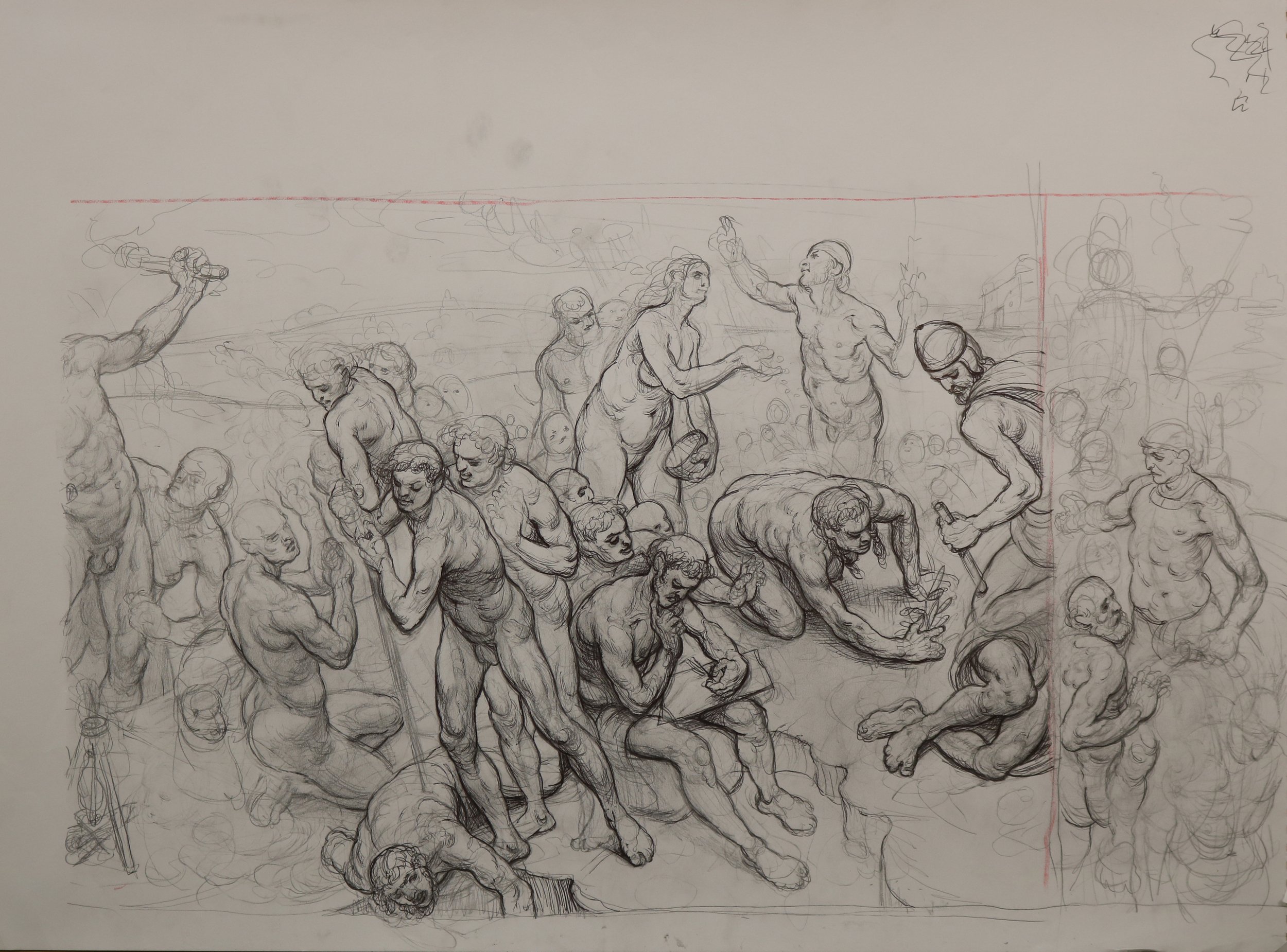In Part two we deal with the mixed blessing of technology and agriculture. In the back is another tower. This one crowned with a lion with a man’s head referencing the early nature god worship in Babylon, Assyria and Egypt. In the beginning Prometheus carries the flaming torch holding the fire he stole from the gods and representing both mankind’s new technical prowess that put him at the top of the animal kingdom. He takes the crown from the old man at his feet as his power grows so does his dominion over people and less developed civilizations. moving forward a mother holds her baby and a sheep this is the epoch of human sacrifice characteristic of the Homeric age in which Agamemnon sacrifices Iphigenia for a wind in troy. It will not be the only reference to the Homeric stories in the paining. Theseus slays the minotaur in the foreground ending the sacrifice Crete demanded of Athens of seven young men and seven young women. By slaying the minotaur, he ended the ritual of human sacrifice and a primitive epoch in humanity in which men were sacrificed to the gods. Figures sow seeds and grow plants in the back while the new civilizations built by agriculture become larger and turn to priests represented by the man raising a staff toward a floating figure in the sky. In the front a scholar holds a compass and writes developing the knowledge and intellect of mankind while Hermes the god of commerce whispers in his ear alluding the foundations of language and mathematics in trade. There will be a pyramid in the distance showing the rise of civilization. Behind Theseus two figures hold bushels of wheat and rough early coins as they begin large scale trade. Finally, a figure in a helm and rod of government hold down another figure as mankind multiplies and various tribes meet, they from larger cities through conquest and conversion. At this point we have come to the modern world and are ready for full fledges societies we can recognize. The next painting will tell of our time and the future.









